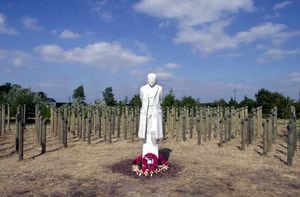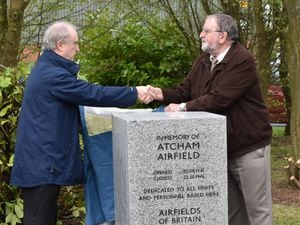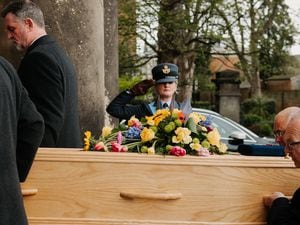Soldier mad with worry about his wife left her a widow
On trial for his life, Shropshire-born soldier Harry Rigby said he was sorry, but he must have been partially mad at the time.

It did not save him. Private Rigby of the 10th Battalion, South Wales Borderers, was executed by firing squad on November 22, 1917. He was 21.
But his explanation for deserting his unit is accepted by a modern generation. His file held at the National Archives includes at the end a pardon issued under Section 359 of the Armed Forces Act 2006.
"The pardon stands as recognition that he was one of many victims of the First World War and that execution was not a fate he deserved," says a note on the document, signed by the then Defence Secretary Des Browne.
His story is included in the latest book by Shrewsbury author Steven John, called The Welsh At War: Through Mud To Victory (Pen & Sword, £25).
It is the last part of a trilogy which is the culmination of over 12 years of research by Steve into the Welsh men and infantry units which fought in the Great War.
Steve has Thomas Henry Basil Rigby as being born near Shifnal in 1896, the son of John Henry Rigby and Jane Rigby, although internet sources put his place of birth as The Nabb, which is Oakengates area.
In any event, the family quickly moved away from Shropshire.
"His father was from Lawley and his mother from Withington," says Steve.
"His father worked as a carriage cleaner and moved the family to Leverton, Manchester, prior to the war."
Rigby was a pre-war soldier, enlisting in February 1914.
"He married Gladys May Lloyd Jones, of Rhyl, in 1915, just before landing in France on September 29, 1915. At some time afterwards he was transferred to the 8th Battalion, South Wales Borderers. He deserted from the battalion but was caught and posted to the 10th Battalion, South Wales Borderers," says Steve.
"He deserted from the 10th Battalion while it was in the midst of the Battle of Pilkem Ridge in August 1917 and was apprehended at Calais, where he pretended to be attached to a base camp. At his court martial he pleaded that he was concerned for his wife’s health, but was found guilty and shot on November 22, 1917.
"He is buried in Cite Bonjean Military Cemetery, Armentieres, France, where the division moved to following its time at Ypres.
"His widow Gladys married another soldier, Tracey Oswald Rees in 1920, and she died in Cardiff in 1921, aged just 26.
"He was one of 17 Welshmen or men of Welsh units to be executed during the war."
Rigby's file at the National Archives became open in 1993 and shows his court martial was in the field on October 22, 1917. It also shows he had form - in April 1917 a court martial gave him a suspended sentence of three years' penal servitude for desertion, and then in May while under orders for the draft overseas, he went absent without leave, and was given a week's detention.
At the October 1917 court martial Private Rigby, who pleaded not guilty, did not call any defence witnesses. He simply handed in a statement.
"I do not remember anything which happened to me after about 12 noon on August the 2nd until I came to my senses on the outskirts of a town called Watou on the 6th of August," he wrote.
He jumped on the empty freightcar of a passing train, not knowing which way the line ran, but thinking the train was going towards Poperinge - that is, towards the front. He fell asleep and when he awoke the train was in a siding in Calais.
"I am sorry this has happened but I must have been partially mad at the time through worrying about my wife. I was married on the 24th September 1915 and sent out to the front on the 29th day of the same month and I have not seen my wife since."
The documents include the chilling words: "Guilty. To suffer death by being shot," "confirmed D. Haig, FM, 17 Nov. 17" - a reprieve from Field Marshal Douglas Haig would have been Rigby's last hope - and "sentence duly carried out."





